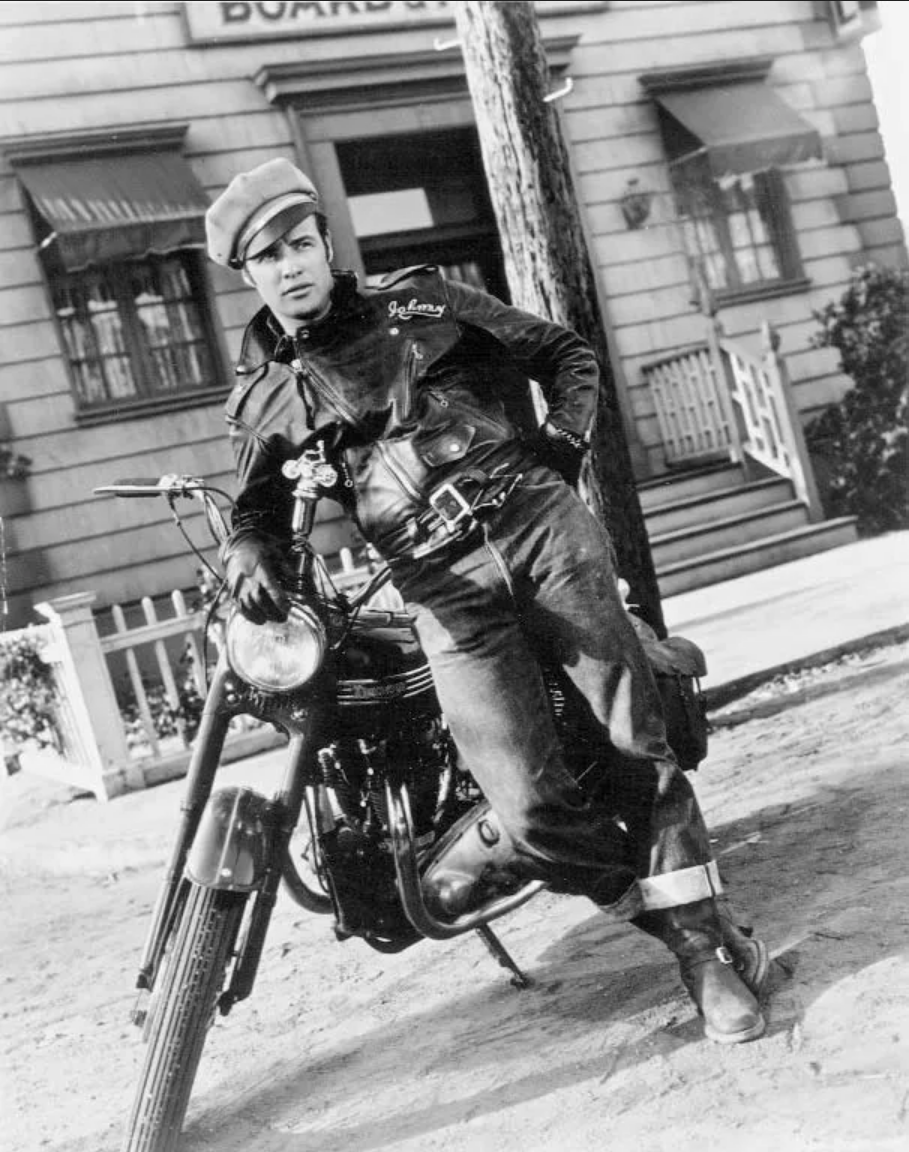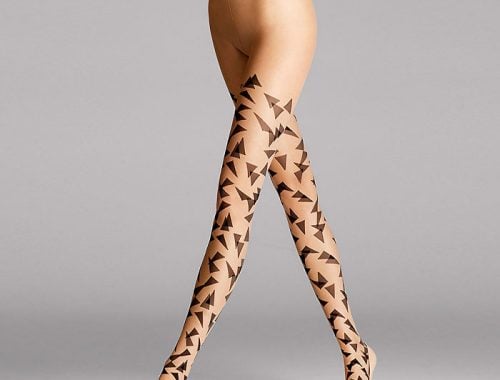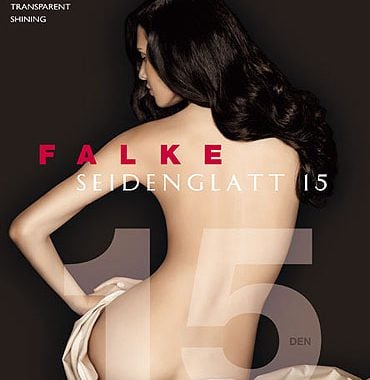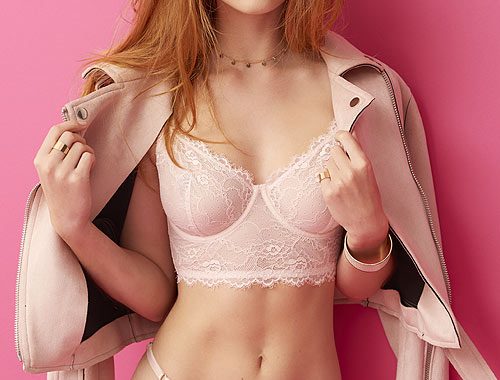Denim Jeans, History And Evolution
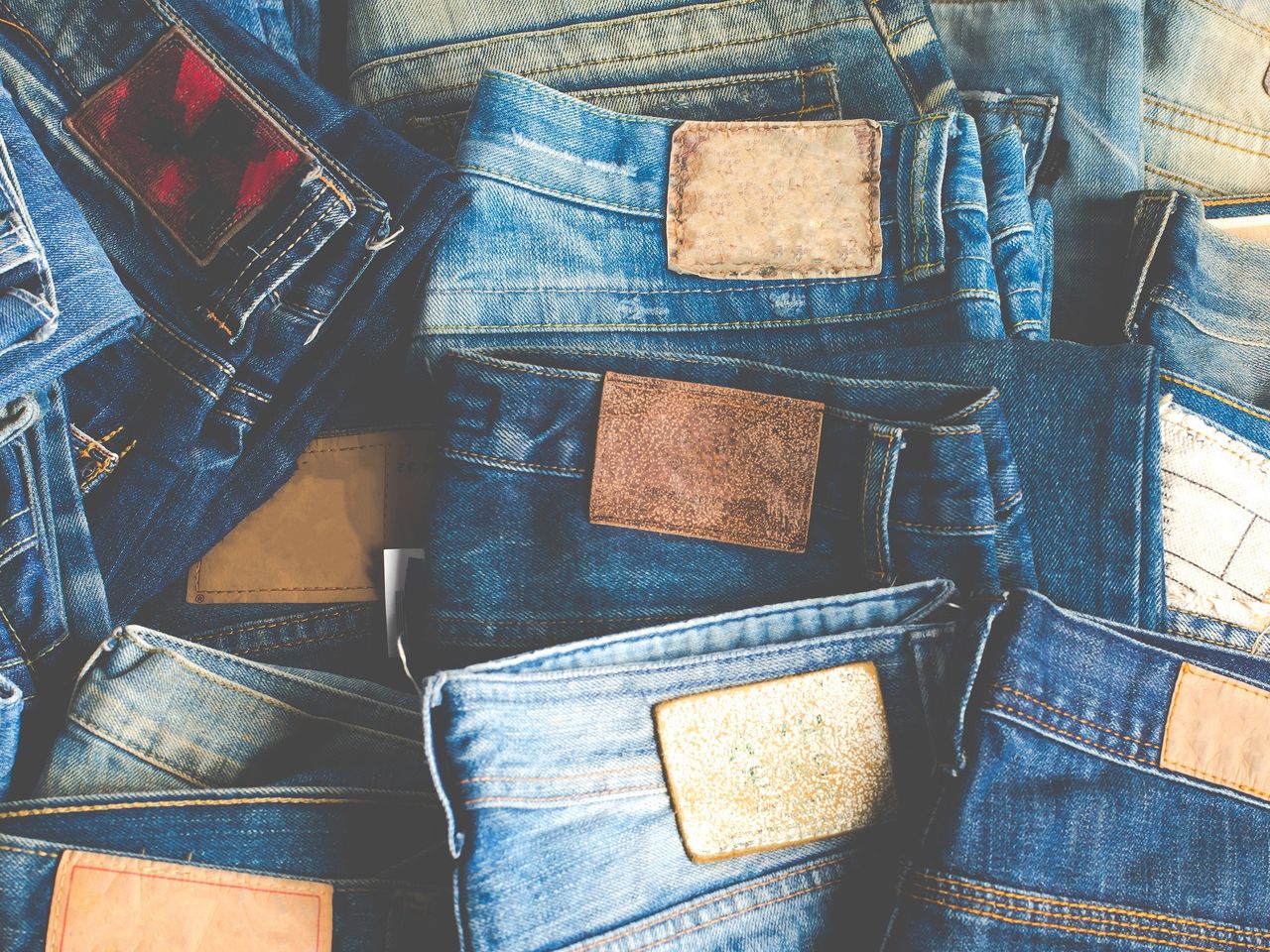
Yves Saint Laurent was once asked what his biggest regret was. He said that he wished he had invented blue jeans. He claimed they were the greatest item of clothing. Comfy, easy to wear, go anywhere, suit anyone, and are utterly timeless. Is there anything closer to perfection than this? According to the greatest name in fashion history, the answer is a resounding “no”. They are a true staple, The true staple, of modern fashion. People of all ages and walks of life wear denim for their durability, comfort, and unrivalled versatility. All this makes them perhaps the most popular type of clothing on planet Earth. But have you ever wondered about the history of denim jeans? How did such a wonderful and iconic piece of clothing come to be? Let’s explore the journey of denim jeans, from their humble beginnings to the global fashion phenomenon they are today.
Early Origins of Denim
The history of denim jeans goes all the way back to the 17th century. Denim was first invented in Nimes, France. There, textiles manufacturers created a fabric called “serge de Nimes”. The word “denim” comes from the French “de Nimes”. This means “from Nimes” in English. This fabric was initially a blend of silk and wool. Silk is particularly sturdy, and wool is good at wicking moisture. And so, it soon became known for its durability and strength. This fabric was perfect for various purposes, including sails for ships. But it wouldn’t see a use in the world of clothing just yet.
In the 18th century, denim gained in popularity in the United States, thanks to its suitability for sturdy work clothes. It was perfect for labourers, farmers, miners, and factory workers, due to its durability and resistance to wear and tear. The fabric became distinct thanks to its blue colour, originating in the natural dye they used to make it. Indigo, a plant-based dye, was plentiful at the time. The blue colour of denim fabric would later become one of its most distinctive features. Now, it is a defining characteristic of denim jeans.
But What Is Denim Exactly?
Although we mentioned denim began life as a silk and wool blend, that is no longer the case. It is too expensive to use these two materials. Instead, designers use a sturdy type of cotton. Specifically, a warp-faced textile where the weft passes under two or more warp threads. This makes a twill type fabric with a diagonal ribbing, something that drapes beautifully whilst being really sturdy. A similar fabric is dungaree, a fabric like denim produced in India for hundreds of years. But it isn’t quite the same. The denim we know now is a French fabric, now made with cotton and stitched to create one of the toughest fabrics around.
Birth of Denim Jeans
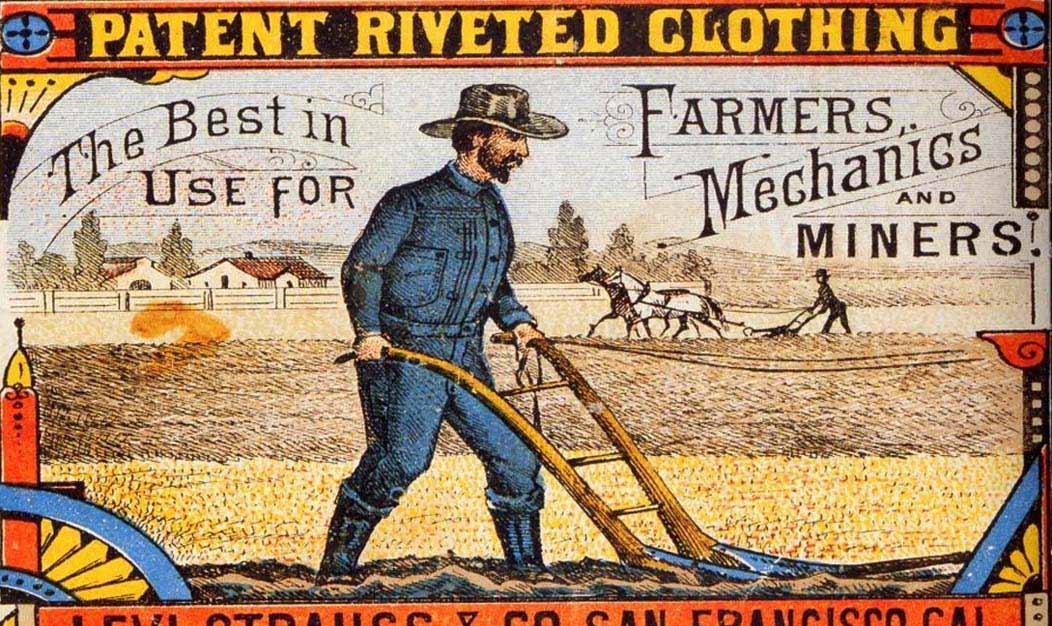
The history of denim jeans as we know them today starts with Jacob W. Davis. He was a tailor from Latvia, who emigrated to the Reno, Nevada, in the United States. In the late 19th century, a customer approached Davis who needed a durable pair of pants for her husband. He worked as a woodcutter and it was a tough and totally manual trade at the time, so he went through new pants pretty quickly. Davis came up with the idea of reinforcing the stress points of the pants, like the pockets and crotch, with metal rivets. This made them infinitely more durable. He applied for a patent for this new design in 1873. He teamed up with a fabric merchant from San Francisco, to manufacture these reinforced pants. The merchants name was Levi Strauss.
Denim jeans went by the name “waist overalls” for a long time. The newly formed Levi Strauss & Co. made them from their new denim fabric. They featured a copper rivet at the stress points, which made them incredibly durable and suitable for heavy-duty work. They made their first denim jeans with a button fly, a feature you will find in their iconic 501 jeans to this day. Unfortunately, it only had one back pocket, an odd choice but one that made sense at the time considering most stuff you stored would have been in a tool belt. Levi and Strauss meant for their jeans to be functional workwear for labourers. It would be a long time before they became fashionable.
Denim Jeans in the 20th Century
In the early 1900s, denim jeans became popular among the working class men of America. Whether it was cowboys, miners, or railroad workers, all those who built their country with the sweat of their brow wore a pair of jeans. During World War II, denim jeans were a symbol of patriotism. Off duty soldiers often just wore their work uniforms. It made denim a symbol of American manufacturing and the spirit of freedom from the days of the frontier.
But it wasn’t until a little later that denim jeans began to make their way into popular culture to. It was the silver screen of Hollywood that made them into a fashion trend. In the 1940s, denim jeans were a favourite of Hollywood actors, but not the actors themselves. It was their roles.
Instead they were part of the costume department of Western movies, so they were a period costume and not worn by the actors in their own lives. But the characters are what people love most about the movie, not the man or woman behind it. So one way or another, it helped to popularize them as a fashion statement. But by the 1950s, people like John Wayne and Marilyn Monroe often wore denim jeans. It finally brought them into the mainstream fashion consciousness.
From Proud Patriots To Rowdy Rebels
In the 1950s, denim jeans became a symbol of rebellion and the emerging counterculture. Flower Power wasn’t the first rebellion in America, and the 1950s saw the birth of the Beat Generation. Writers like Jack Kerouac and Ken Kesey formed this new generation of free thinkers. Soon, the Beatniks emerged, based on these writers and their lifestyles. Travel was a part of the beat Movement, and sturdy and comfy clothes like denim became essential. Soon, teenagers of all stripes began wearing them as a form of protest against the dominant culture. But the Beatniks were not the only youth movement around. There was also the Rockabillies and the Greasers.
These were early rock and roll groups that were even more rebellious than the Beatniks. The Rockabilly scene was most rock and roll fans from the Deep South, hence the portmanteau of “rock” and “hillbilly”. Artists like Elvis Presley would occasionally be seen wearing jeans. And there was no son of the South more famous and sexy and daring than The King Of Rock And Roll. The Rockabilly guys were pretty cool and chic, but the Greasers were even more daring. These were the guys who rode motorcycles, tore off the sleeves on their white t-shirts, and greased up their hair. The perfect examples were James Dean in Rebel Without A Cause, and Marlon Brando in The Wild One. And of course, denim jeans were a staple of their look.
With Elvis, James Dean, and Marlon Brando sporting them, is there any wonder why jeans become accepted? Finally, after nearly a century, they started to be seen as laid back, not lazy. More sleek than slovenly. After all, there was no one cooler than the King, the Rebel, and the greatest actor of all time.
Tough Guys? Why Not Give Peace A Chance?
Speaking of Flower Power, they were embraced by the hippie movement too. A strange turn of events considering the peace and love of the Hippies was quite contrary to what came before. It wasn’t the rough and ready fighting spirit of the bikers who adopted them just a decade before. Nor was it close to the soldiers, sailors, and marines that wore them another decade previous. But the Hippies took the took them in their own direction, as they often did. They preferred a tie-dye pattern and embroidered look. Soon they were the number one fashion choice among the counterculture.
Denim jeans were also associated with the feminist movement. Some women started wearing them as a form of empowerment and liberation from traditional gender roles. They had been a Rockabilly staple amongst young women, but that was when they were tailored and tapered and simply more feminine. Now, they were rough and ready, something with frays and holes in them. A real Rosie The Riveter kind of look. An item of dirty and tatty work wear for a woman? This was a huge step forward in making people view women as just as capable as the average man. It was quite a shocking move at the time, but that was the point, after all.
Finally In The Mainstream?
In the 1960s and 1970s, denim jeans really became a feature of the landscape. But were they mainstream? But soon after the counter-culture became the mainstream, its apparel soon followed. In the 1970s, jeans were totally normal. Outside of the early Punk Rock movement, there were few movements that really wore jeans in a way that was transgressive. Even then, Punk was not shocking for its use of the indigo blue fabric, but for its spikes and studs on leather jackets and its hair styles and its wild and discordant sound.
By the 1980s and 1990s, denim jeans were so popular they began to get their own subdivisions and types. They underwent a transformation, becoming more diverse in styles and fits. Different washes, cuts, and finishes were introduced. It gave consumers more choice when it came to their personal style. Designer brands like Calvin Klein popularized designer denim jeans, making them a luxury fashion item. They weren’t just workwear repurposed by those too laid back to get changed after working in a field or a workshop all day. These humble work pants were the casual item of choice. They transcended social mores and cultural boundaries to become a staple in the wardrobes of people all over the world.
Denim Jeans in the 21st Century
In the 21st century, the history of denim jeans comes to what might be its pinnacle. They continue to dominate the fashion landscape. They have become a multi-billion dollar industry. There are various styles, brands, and price points available to suit different consumer preferences. Denim jeans have also become more sustainable, with an increasing focus on eco-friendly denim production methods and recycled denim.
In recent years, denim jeans have also been embraced by high fashion brands and the runway, challenging the traditional notion of denim as casual wear. Denim jeans have been elevated to new heights of creativity and innovation, with unique washes, finishes, and embellishments that push the boundaries of traditional denim design.
Denim jeans have also been used as a form of self-expression and activism. Customized and personalized denim jeans, with slogans, patches, and artwork, have become a way for individuals to make a statement and showcase their values and beliefs. Denim jeans have been used as a canvas for social and political messages, reflecting the changing times and the power of fashion as a means of communication.
Conclusion
The history of denim jeans is a rich one. Jeans have come a long way from their humble beginnings as durable workwear to becoming a global fashion phenomenon. They have been worn by different generations, cultures, and social classes, transcending boundaries and evolving with the changing times. Denim jeans have been associated with rebellion, counterculture, and freedom. And now they have become a symbol for anyone, for all of our self-expression, individuality, and personal style.
As we look back at the history of denim jeans, it’s quite clear they have a rich and diverse heritage. And it is one that continues to evolve. From their origins as functional workwear, to their transformation into a fashion statement, denim jeans have impacted fashion like nothing else. They have left an indelible mark on the world of fashion and popular culture. It is timeless, versatile, sturdy, affordable, universal, and beloved, and you should always have a pair in your wardrobe.

